CPSC 330 Lecture 14: K-Means
Focus on the breath!

Announcements
- Midterm 1 grades were released last week
- HW5 was due yesterday
- HW6 has been released. It’s due next week Monday.
- Computationally intensive
- You need to install many packages
(iClicker) Midterm poll
Select all of the following statements which are TRUE.
- I’m happy with my progress and learning in this course.
- I find the course content interesting, but the pace is a bit overwhelming. Balancing this course with other responsibilities is challenging
- I’m doing okay, but I feel stressed and worried about upcoming assessments.
- I’m confused about some concepts and would appreciate more clarification or review sessions.
- I’m struggling to keep up with the material. I am not happy with my learning in this course and my morale is low :(.
Supervised learning
- Training data comprises a set of observations (\(X\)) and their corresponding targets (\(y\)).
- We wish to find a model function \(f\) that relates \(X\) to \(y\).
- Then use that model function to predict the targets of new examples.
- We have been working with this set up so far.

Unsupervised learning
- Training data consists of observations (\(X\)) without any corresponding targets.
- Unsupervised learning could be used to group similar things together in \(X\) or to find underlying structure in the data.
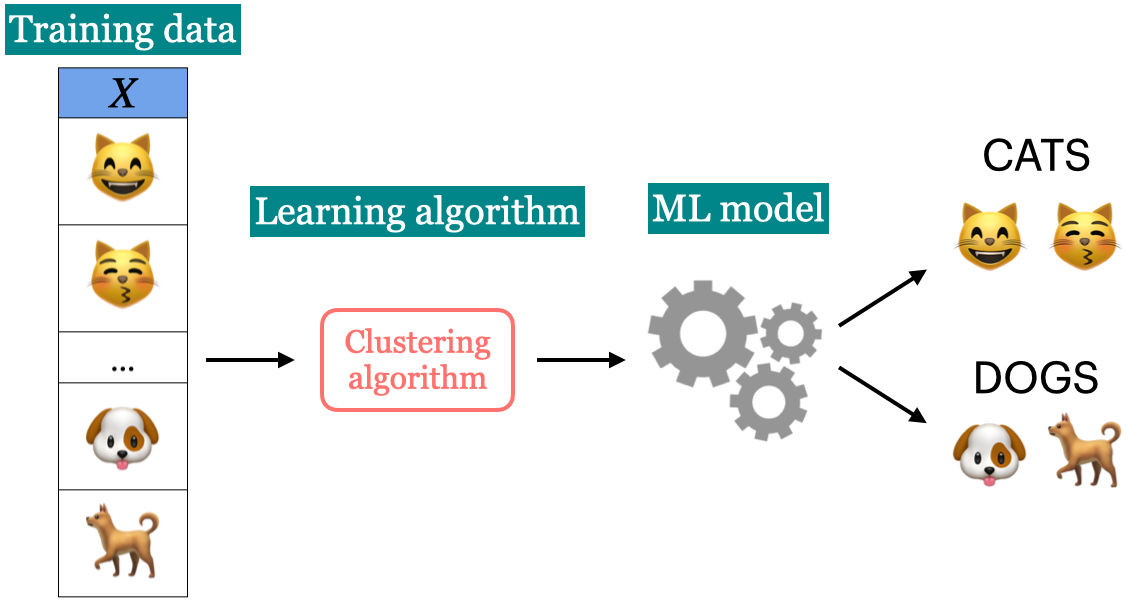
Clustering activity
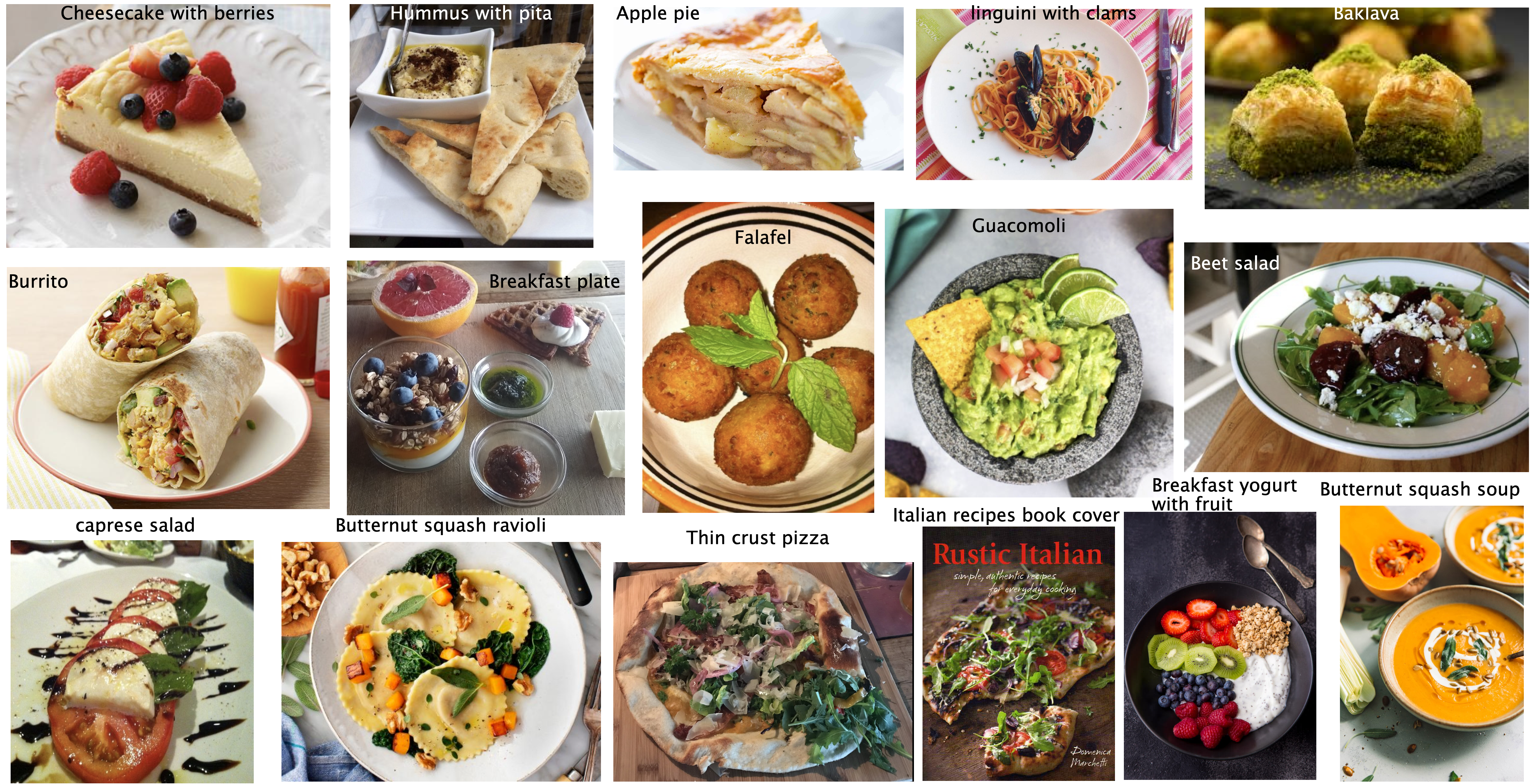
- Categorize the food items in the image and write your categories. Do you think there is one correct way to cluster these images? Why or why not?
- If you want to build a machine learning model to cluster such images how would you represent such images?
- Write your answers here: https://docs.google.com/document/d/12GXA9Efi_19WiRnCi8FiOmdpxM-I_wq2nz97LjvXILg/edit?usp=sharing
The “perfect” spaghetti sauce
Suppose you are a hypothetical spaghetti sauce company and you’re asked to create the “perfect” spaghetti sauce which makes all your customers happy. The truth is humans are diverse and there is no “perfect” spaghetti sauce. There are “perfect” spaghetti sauces that cater to different tastes!
The “perfect” spaghetti sauce
Howard Moskowitz found out that Americans fall into one of the following three categories:
- people who like their spaghetti sauce plain
- people who like their spaghetti sauce spicy
- people who like their spaghetti sauce extra chunky

Reference: Malcolm Gladwell’s Ted talk
The “perfect” spaghetti sauce
- If one “perfect” authentic sauce satisfies 60%, of the people on average, creating several tailored sauce clusters could increase average happiness to between 75% to 78%.
- Can we apply this concept of clustering and tailoring solutions to specific groups in machine learning?
K-Means
K-Means clustering algorithm
- Select K initial centroids.
- Assign each data point to the nearest centroid.
- Recalculate centroids based on assigned points.
- Repeat until centroids stabilize or reach a maximum number of iterations.
K-Means activity
Initialization
In K-Means, we start with random initial cluster centers. Who would like to be cluster centers?
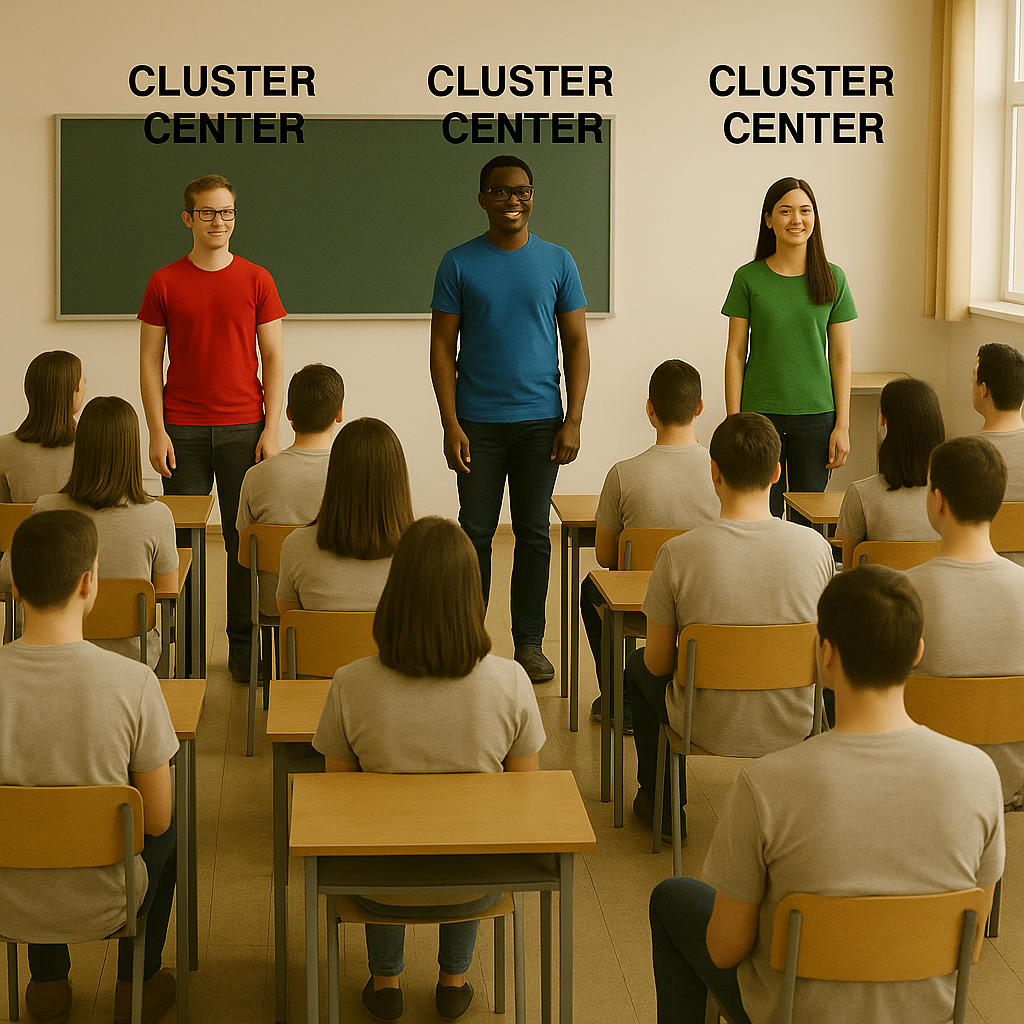
Source: Image created by ChatGPT 5.0
Let’s pretend you are data points scattered across a 2D feature space.
Cluster assignment
Which cluster do you belong to?
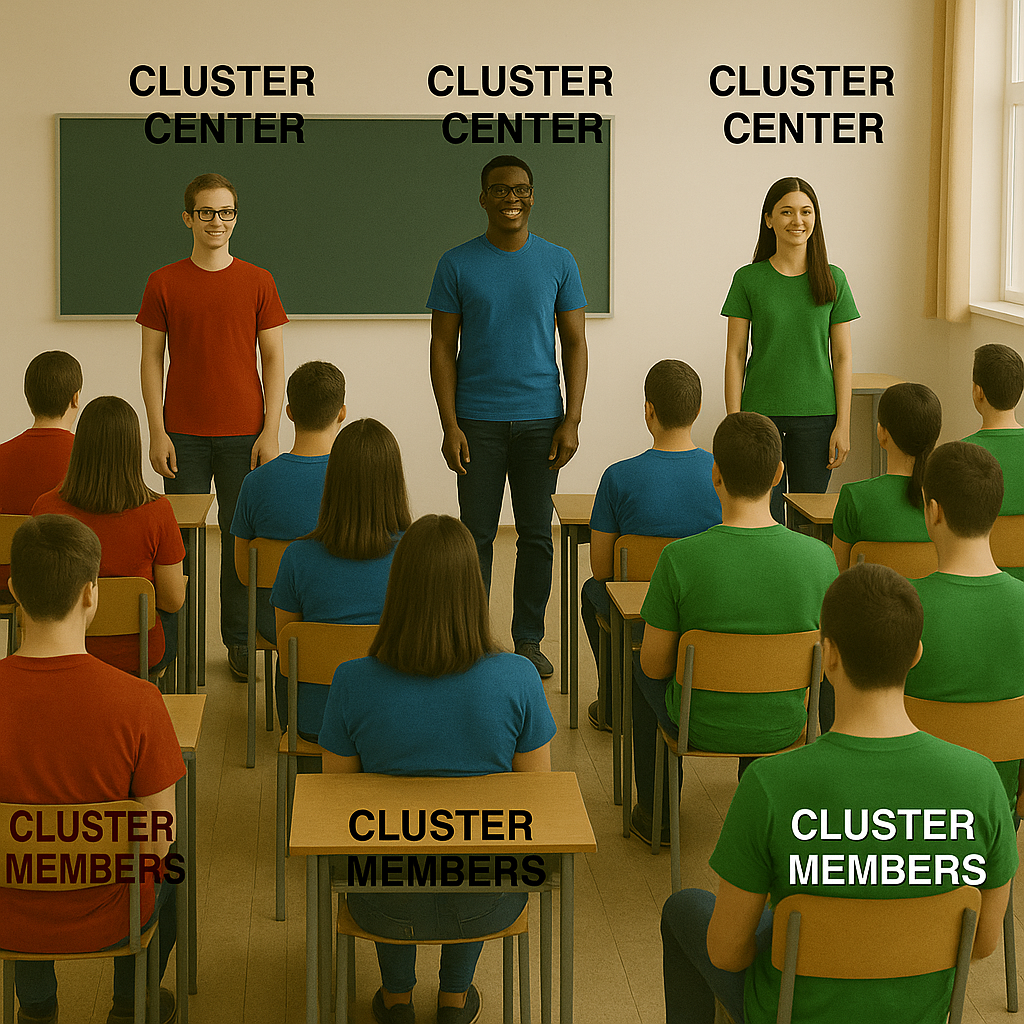
Source: Image created by ChatGPT 5.0
Look around and decide which cluster center is closest to you, just by eyeballing distance in the room.
Recompute cluster centers
Now each cluster needs to find its new mean location. Let’s compute new centroids!
For each cluster, identify the “average” position of your members. For example, pick someone roughly in the middle or calculate the average row/column number.
Move your old “cluster center” to these new locations.
Repeat cluster assignment
Now that cluster centers have moved, you may need to switch clusters! Check again: which center are you closest to now?
Discussion questions
Did anyone switch clusters in the second round?
When do you think K-Means stops?
Could we end up in a different final clustering if we started with different centers?
K-Means example
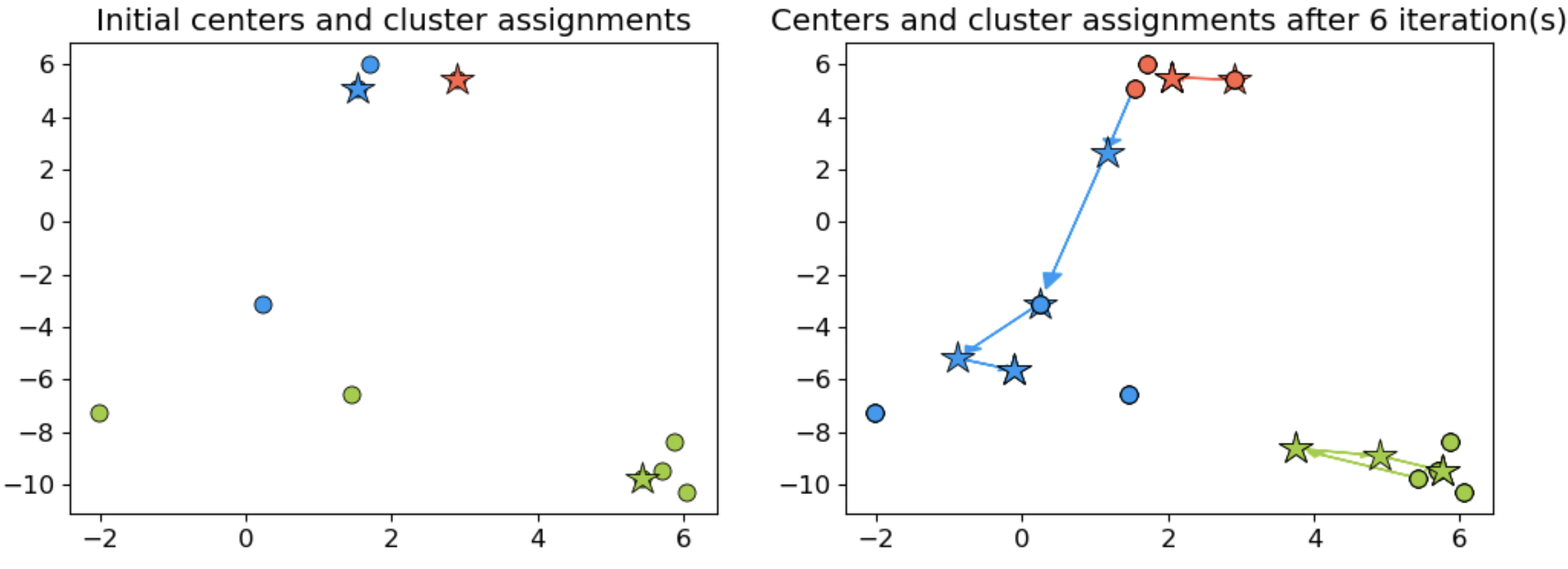
K-Means pros and cons
- Advantages:
- Simple and efficient for large datasets.
- Works well with spherical clusters.
- Limitations:
- Needs pre-defined \(k\).
- Sensitive to outliers and initial centroid placement.
iClicker Exercise 14.1
Select all of the following statements which are True
- K-Means algorithm always converges to the same solution.
- \(K\) in K-Means should always be \(\leq\) # of features.
- In K-Means, it makes sense to have \(K\) \(\leq\) # of examples.
- In K-Means, in some iterations some points may be left unassigned.
iClicker Exercise 14.2
Select all of the following statements which are True
- K-Means is sensitive to initialization and the solution may change depending upon the initialization.
- K-means terminates when the number of clusters does not increase between iterations.
- K-means terminates when the centroid locations do not change between iterations.
- K-Means is guaranteed to find the optimal solution.
Choosing \(k\) (the number of clusters)
How many clusters?
- Clustering is not about perfect scores, but insight.
- Typically we do not want too few or way too many clusters.
- There’s no single “correct” value of \(k\) – only useful ones that make sense for your problem.
- Some preferred values may exist (e.g., based on domain knowledge).
- The goal is to find interpretable, meaningful clusters. So pick \(k\) that helps tell a useful story about your data.
- We typically go with quantitative and qualitative approaches.
Quantitative methods
- The Elbow plot
- Plot inertia vs. K
- Look for the “elbow” — diminishing returns
- Plot inertia vs. K
- Silhouette score
- Measures cluster cohesion and separation
- Higher score: better-defined clusters
- Measures cluster cohesion and separation
Qualitative methods
- Manually inspect clusters:
- Do they make sense?
- Are they interpretable and actionable?
- The ultimate goal:
Human-understandable themes for real-world decisions. - There’s no escape from manual interpretation!
The Elbow method
- Purpose: Identify the optimal number of clusters \(k\).
- How it Works:
- Plot intra-cluster distances for different values of \(k\).
- Look for the “elbow” point where the intra-cluster reduction slows.
- Interpretation:
- The point of diminishing returns suggests a good \(k\).
The Elbow method example
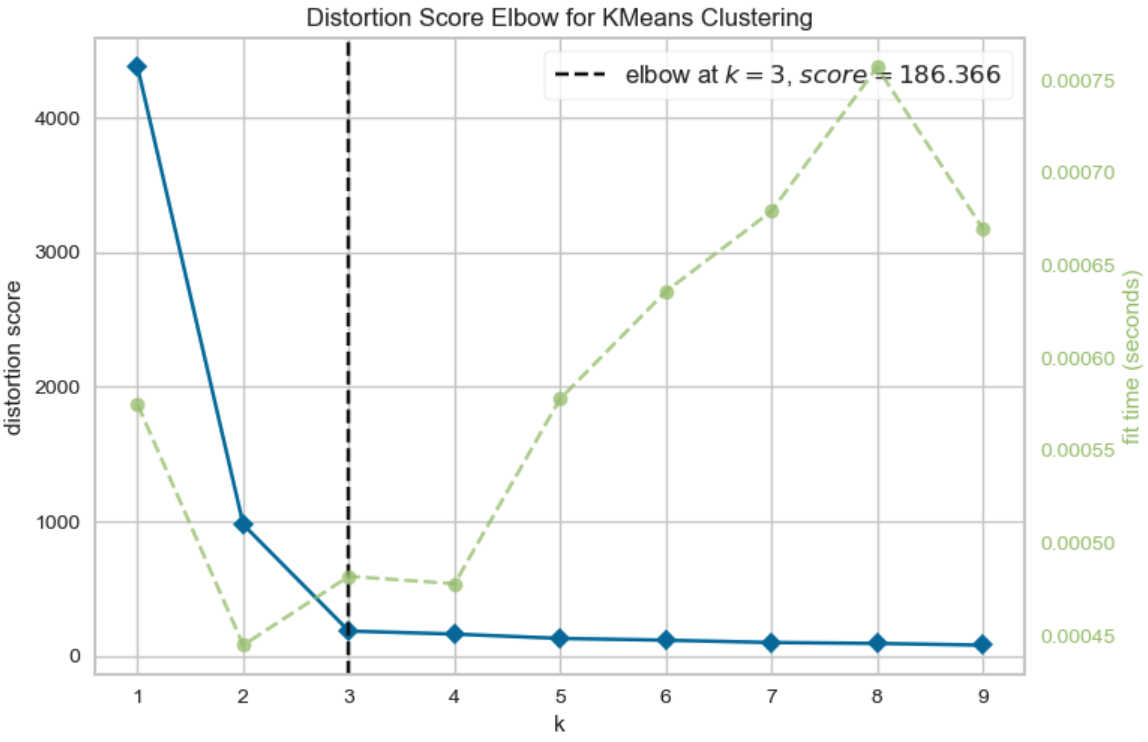
What would be the intracluster distance when
- \(k=1\)
- \(k=\) # number of data points?
The Silhouette method
- Silhouette Score: Measures how well data points fit within their cluster.
- \(s(i) = \frac{b(i) - a(i)}{\max (a(i), b(i))}\)
- \(a(i)\): Mean distance to other points in the same cluster.
- \(b(i)\): Mean distance to points in the nearest neighboring cluster.
- \(s(i) = \frac{b(i) - a(i)}{\max (a(i), b(i))}\)
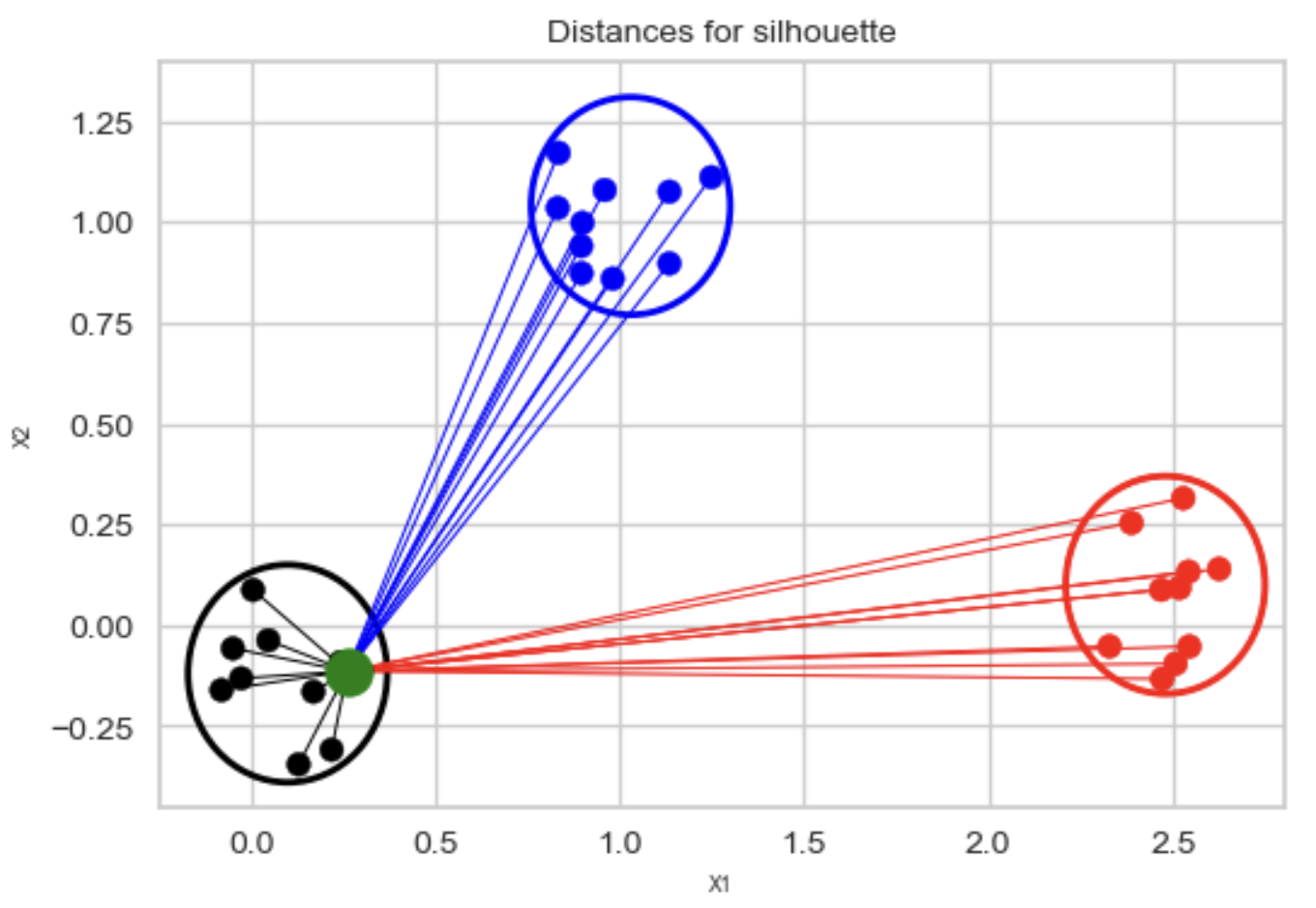
The Silhouette method
- Range: -1 to 1
- 1: Perfect clustering.
- 0: Overlapping clusters.
- Negative: Poor clustering.
- Higher average silhouette score indicates “better” clustering.
Silhouette plot example
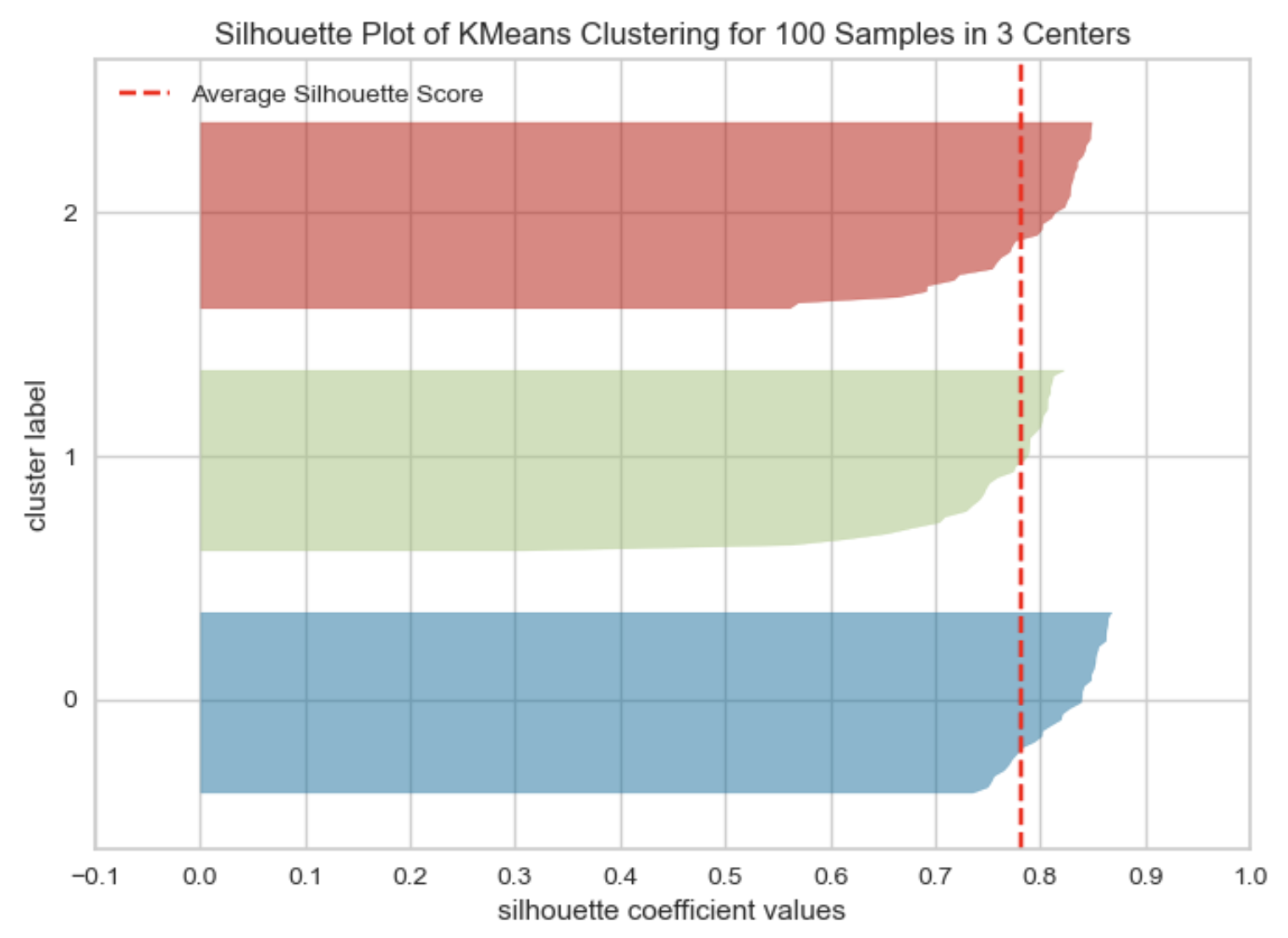
iClicker Exercise 14.3
Select all of the following statements which are True
- If you train K-Means with
n_clusters= the number of examples, the inertia value will be 0.
- If you train K-Means with
- The elbow plot shows the tradeoff between within cluster distance and the number of clusters.
- Unlike the Elbow method, the Silhouette method is not dependent on the notion of cluster centers.
- The elbow plot is not a reliable method to obtain the optimal number of clusters in all cases.
- The Silhouette scores ranges between -1 and 1 where higher scores indicates better cluster assignments.
Class demo
